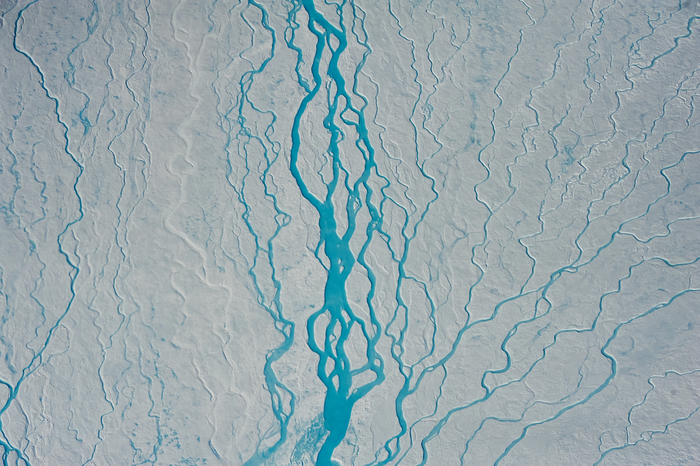The effects of global warming are nothing new, but now the temperature in central-north Greenland is reaching unprecedented levels. A recent study published in Nature revealed that the most recent decade surveyed in the study, from 2001 to 2011, was the warmest decade in the past 1,000 years and was 1.5 °C warmer than during the 20th century. In order to uncover this information, researchers collected ice cores from across the region and reconstructed temperatures from them over the past millennium.
The research team extracted two ice cores with a total length of almost 6 kilometers from two sites in central-north Greenland with an elevation of more than 3 kilometers above sea level. These cores were analyzed for their ice composition and gas content to reconstruct temperatures back to 1000 AD. The data obtained also indicated how much snow melted during each season – a key factor for understanding how much ice melts and flows into our oceans each year as a result of global warming.

The results showed that current levels are higher than anything seen over the past 1000 years and are even higher than those recorded in earlier studies that used shorter core samples or less precise methods. This indicates that global warming has had an especially strong impact on central-north Greenland’s climate over the last few decades compared to other parts of our planet where temperatures have also been rising steeply.
In addition, researchers found evidence for several extreme melting events during summers between 1815 and 1875 which may have caused widespread flooding at lower elevations due to rivers full of meltwater suddenly breaking through dams of solidified glacier ice. These events occurred before industrialization began significantly increasing atmospheric CO2 concentrations and indicate that natural variability can also cause extreme melting events even without human influence.
This new research is a stark reminder of just how quickly temperatures around the world can climb due to global warming – especially in places like Greenland’s central-north region which is already experiencing dramatic impacts due to rising temperatures. By studying these ice cores, we can gain valuable insights into not only what has happened in this particular area but also what could potentially happen if global warming continues unchecked. It’s clear that action must be taken now if we want to ensure a future where our planet remains habitable for generations to come.










